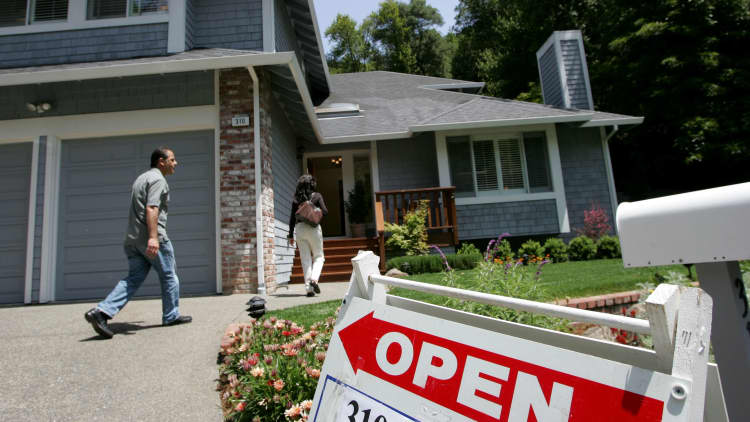
House hunters out this spring will have to pound more and more pavement to find their home sweet home.
The number of for-sale listings fell again in December to the lowest level since 1999, according to the National Association of Realtors. There were just 1.65 million homes for sale at the end of December, which at the current sales pace would take only about 3 ½ months to exhaust. A normal, balanced market has about a six-month supply.
This, as the busy spring market is already on the verge of starting. "To say early buyer demand is strong in early 2017 is an understatement — it is titanic. Redfin data shows that buyers are out touring in droves, ready to pounce on new listings that fit the bill," said Nela Richardson, chief economist at Redfin. "The only thing missing is homes for sale to satisfy demand, because there just aren't a lot of homes available to buy right now. We are in a real estate black hole until those listings show up again."
In some local markets, the situation is more dire. The share of communities with supply at less than three months jumped from about 13 percent to more than 20 percent in the past year, according to a survey by Proteck Valuation Services, a real estate appraisal and analytics company. For example, in Dallas, the supply of homes for sale dropped by nearly 41 percent from December 2015 to December 2016.
"This means fierce competition for homes, where buyers that are able to act fast and pose less risk to the seller have the advantage. These 'favored' buyers would include those already pre-approved for a mortgage, those with larger cash down payments and those with no contingencies (like the sale of another home)," according to the Proteck report.
The shortage is being driven by surging demand and weak home construction. Single-family housing starts continue to rise, but very slowly each month. Builders are still operating at well below normal construction levels, and that doesn't even account for pent-up demand from the housing crisis and growing household formation.
"The homeownership rate is at a near 50-year low, and it could remain at this level," said Lawrence Yun, chief economist at the NAR. "I'm not sure if this is the trend that America wants."
We are in a real estate black hole until those listings show up again.Nela Richardsonchief economist, Redfin
The older edge of the millennial generation is finally looking toward homeownership, but finding nothing but frustration in their neighborhoods.
Tight supply is pushing home prices past their peaks in some markets and well past income growth nationally. Mortgage rates were historically low in 2016, helping to offset the higher prices, but that is not the case this year. Rates are already up significantly since the election and are expected to continue higher. Only a few of the big volume home builders are putting resources into the starter home market.
"I continuously say that the industry and the first-time buyer need more homes priced below $250,000, but the high costs of lots, labor and regulations puts tight margins on this price point. In coming months we'll watch to see what influence the rise in rates had," said Peter Boockvar, chief market analyst at The Lindsey Group.
First-time buyers continue to make up less than a third of the sales market; historically they are usually at about 40 percent. Affordability is weakening, but mortgage credit availability also continues to be difficult.
As rates rise, fewer potential borrowers qualify for the strict debt-to-income levels lenders now require. Some are looking to the Trump administration to loosen regulations on lenders, but that could take time and is unlikely to happen before the spring season. The administration already froze a last-minute cut in the FHA insurance premium by the outgoing Obama administration, which might have opened the market to more homebuyers.
"Constrained inventory in many areas and climbing rents, home prices and mortgage rates means it's not getting any easier to be a first-time buyer," said Yun. "It'll take more entry-level supply, continued job gains and even stronger wage growth for first-timers to make up a greater share of the market."


